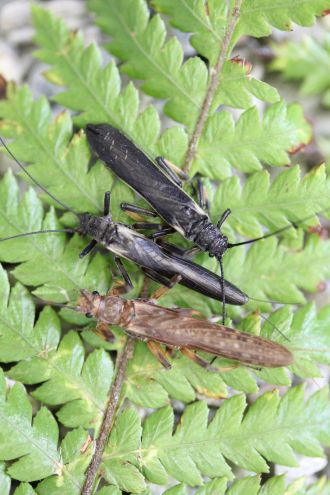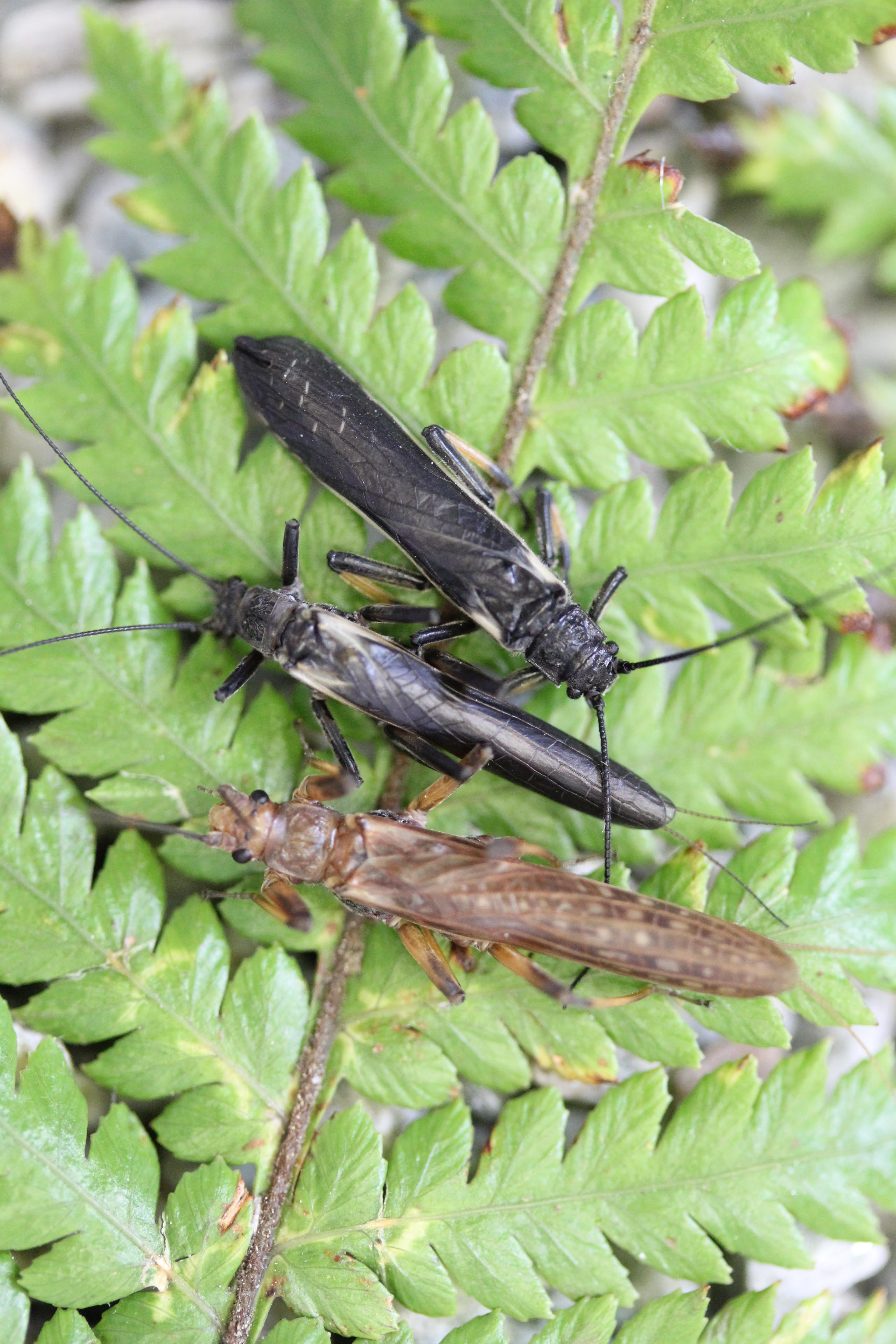Media release
From:
Human actions cause insect colour change
New Zealand’s native stoneflies have changed colour in response to human-driven environmental changes, new research shows.
Just published in the journal Science, the University of Otago study provides arguably the world’s most clear-cut case of animal evolution in response to change made by humans.
Co-author Professor Jon Waters, of the Department of Zoology, says the stonefly has become a different colour due to recent deforestation.
“In natural forested regions, a native species has evolved ‘warning’ colours that mimic those of a poisonous forest species, to trick predators into thinking they are poisonous too.
“But the removal of forests since humans arrived has removed the poisonous species. As a result, in deforested regions the mimicking species has abandoned this strategy – as there is nothing to mimic – instead evolving into a different colour.”
Scientists have long wondered whether humans are causing evolutionary changes in natural populations.
The most well-known example of evolution caused by humans was the peppered moth population in the United Kingdom, which changed colour in response to industrial pollution in the 1800s.
But Professor Waters says even that case has been considered controversial.
This new study shows how humans have changed the way native species interact.
Co-author Dr Graham McCulloch says humans have disrupted ecological interactions between species that evolved over millions of years, but some of our native species are resilient enough to overcome this.
“This study is important because it shows that, at least for some of our native species, there is the possibility of adapting to the environmental changes caused by humans, even when the change is rapid,” Dr McCulloch says.
“It also shows that independent populations have undergone similar changes in response to deforestation – there have been similar shifts independently in different parts of the species’ range – showing that evolution can be a predictable process.”
Expert Reaction
These comments have been collated by the Science Media Centre to provide a variety of expert perspectives on this issue. Feel free to use these quotes in your stories. Views expressed are the personal opinions of the experts named. They do not represent the views of the SMC or any other organisation unless specifically stated.
Professor Jonathan Waters, Department of Zoology, University of Otago, and an author of this study, comments:
In a fast-changing world, some species have to shift or adapt in order to survive. We know some species can move around, but the evidence for wild populations instead 'staying put' and evolving to keep pace with environmental change is less clear.
"Until now, the most famous example of evolution caused by humans is the peppered moth population in the UK which changed colour in response to industrial pollution during the 1800s. But even this case has proven controversial. Our new study from South Island provides arguably the world’s most clear-cut case of rapid evolution in response to human-driven changes to wild populations. These findings have potential to become the textbook example of human-driven evolution worldwide.
"The study reveals that recent loss of forest throughout NZ has driven changes in the colour of native stonefly populations. In natural forested regions, a native species has evolved ‘warning’ colours that mimic those of a poisonous forest species (to avoid being eaten by our native birds). But removal of forest since human arrival has removed the poisonous species, and as a result, in deforested regions the mimic species has evolved a new colour as there is now nothing poisonous to mimic.
"Our study measured shifts in insect colour between forested and deforested populations; discovered the key gene involved in this evolutionary change, and showed that predator behaviour has shifted between forested and deforested habitats.
"The findings illustrate how humans have changed the ways in which our native species interact, disrupting adaptations that had co-evolved over millions of years.
"Overall, we feel this work is important because it shows that (for at least some of our native species) there is the possibility of adapting to the rapid environmental changes caused by humans. It also shows that independent populations have undergone similar changes in response to deforestation - i.e. similar shifts have occurred independently in different parts of the species’ range - showing that evolution can be a predictable process.
Multimedia




 New Zealand
New Zealand


